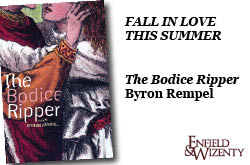Contributor
Gwen Benaway
Gwen Benaway is a trans woman of Anishinaabe and Métis descent. Her first collection of poetry, Ceremonies for the Dead, was published in 2013, her second collection of poetry, Passage, was released in 2016 from Kegedonce Press and her third collection of poetry, What I Want is Not What I Hope For, is forthcoming from Bookthug in 2018. In 2015, she was the recipient of the inaugural Speaker’s Award for a Young Author, and, in 2016, she received an Dayne Ogilvie Honour of Distinction for Emerging Queer Authors from the Writer’s Trust of Canada.





‘Glass Beads’ by Dawn Dumont
Book Reviews
Being Indigenous in Canada often feels like stepping into the middle of a conversation. The conversation you are suddenly thrust into is one which has been going for almost 400 years. Finding your place in that dialogue is challenging and forces you to learn about the past and decide on the future you want. Throughout the interconnected stories in her collection, Glass Beads, Dawn Dumont weaves several Indigenous voices together in a narrative of self-discovery that reflects the conversation many Indigenous people find ourselves in.
Non-Indigenous readers may have trouble locating themselves within these stories, but Indigenous readers will immediately be at home with the complexities of Indigenous life. The main voice in the novel belongs to Nellie, a young Cree woman beginning law school. Narrating the world around her, hers is a very real voice, with a mix of insecurity and intelligence. She doesn’t feel attractive or smart. Her life is balanced between the mainstream Canadian world of higher education and the reserve community she comes from. In other words, her experience is very familiar to the many Indigenous young adults walking between worlds.
Other voices are woven throughout the stories, including a young Indigenous man, Everrett, from the same community as Nellie. He is handled with sensitivity as he tries to define his masculinity and figure out what to do with his life. He makes mistakes, sometimes mistreats the women around him and is deeply flawed, but he is also intelligent and burdened with a legacy of violence he did not choose. Then there is a Julie, a tall, thin girl who is often told she is beautiful. Her occasional lover, Taz, is another Indigenous man working through history and his own life as he attempts to become an Indigenous politician. These four voices, Nellie, Everrett, Julie and Taz, are threaded together throughout the stories as they weave in and out of each other’s lives.
Dumont relies heavily on dialogue to carry the narrative forward. This is one of the book’s strengths, but there are moments when a reader might wish for more images or insight into the characters’ motivations. Jumping between years, the story offers small scenes of the four characters’ lives as they grow up. This allows the novel to speak to the complexity of Indigenous lives over the course of a character’s entire development, but it can feel as if the reader is dropping into mini-movies throughout the novel. However, the strong dialogue and the enduring vulnerability of Dumont’s characters pull the reader through the book.
I connected the most with Julie, a vulnerable woman who always seems to be taken advantage of by men and the broader world. The tension and bond between the two Indigenous female characters is particularly rich. Nellie resents Julie for her beauty, but also tries to protect her from the world. Julie sees Nellie’s anger, but offers her a constant friendship. This feels very true to many friendships I’ve had in my own life and the particular way Indigenous women use sisterhood to overcome obstacles.
Indigenous literature often carries a double burden of having to be good art and explain what it is to be Indigenous in Canada. Dumont’s book is good art, but it avoids being educational. As a result, an Indigenous reader is going to get more out of this book than a non-Indigenous reader, simply because we will see the deeper connections between history, community and identity. This is the book’s greatest strength because it allows us—Indigenous readers—to connect with the story in a deeply personal way. Non-Indigenous readers will enjoy this book as well, but the lessons are likely going to be different for them.
Recalling the work of other Indigenous writers like Cherie Dimaline and Richard Van Camp, Glass Beads is a very human story of growth, change and connection. Even if the stories sometimes relies too much on dialogue to reveal its truths, it is overall an intelligent and worthwhile read.
Thistledown Press | 196 pages | $20.00 | paper | ISBN# 9781771871266